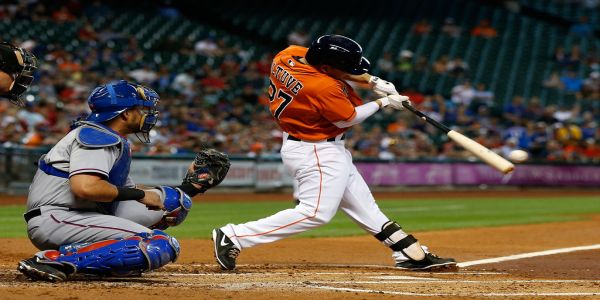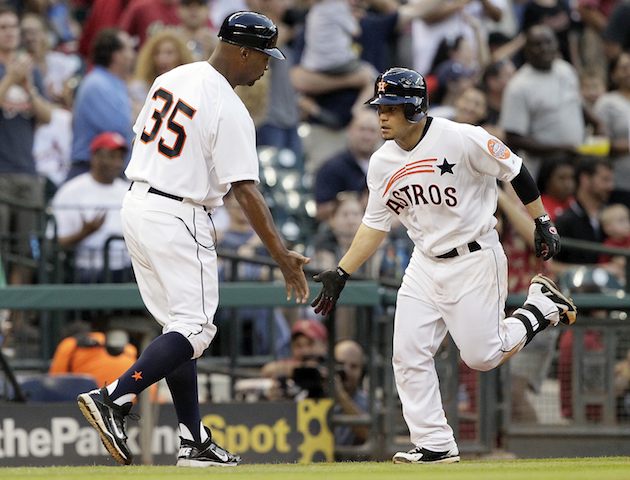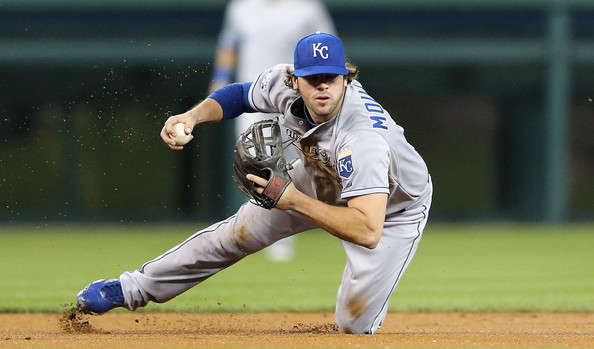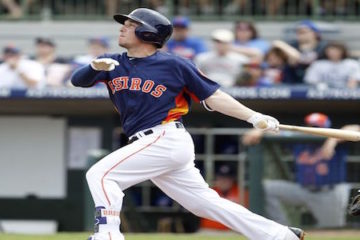2014 Fantasy Baseball: Rotters and Sleepers — Third Basemen
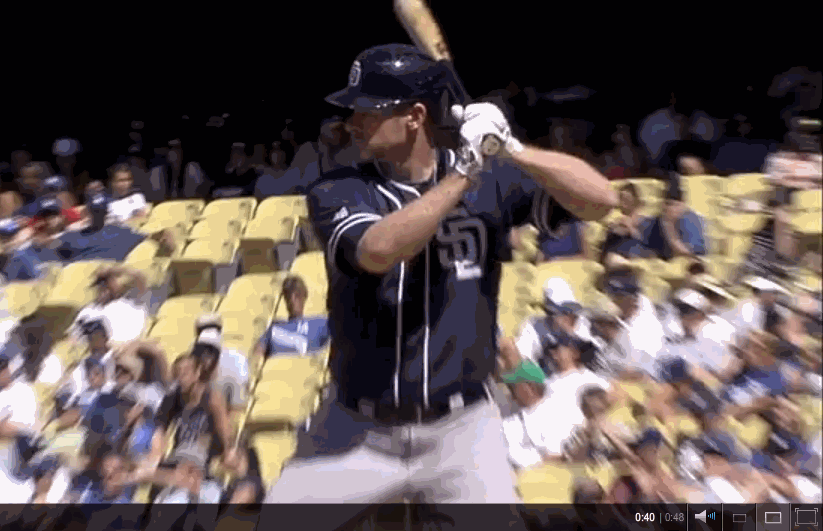
When we look at third base we get some unique situations as it pertains to sleepers and rotters. In some cases, people may question whether they are sleepers at all. In the case of Chase Headley, that is definitely the big question. At one point, he was a top three third baseman, but that wasn’t true last season. So, the question with him will be whether he is a top five third baseman or whether 2012 was a fluke.
In the case of Mike Moustakas, he could very well be a sleeper. In most leagues, he will likely go undrafted after a couple of lackluster seasons. Is there reason to hope that he will do better or is he one of those rotting corpses we should leave in the woods. The key as always will be looking inside the numbers from the past few seasons.
In the case of Headley, he has not shown the power he showed in 2012 in any other season of his career. Immediately, red flags would tell us that we might be looking at a top ten third baseman, but not the top five third baseman he was in 2012. In fact, we are going to go back with the standard numbers a little further back to demonstrate how unusual that 2012 season was.
|
AVG |
HR |
Runs |
RBI |
SB |
|
| 2009 |
.262 |
9 |
62 |
64 |
10 |
| 2010 |
.264 |
12 |
77 |
58 |
17 |
| 2011 |
.289 |
11 |
43 |
44 |
13 |
| 2012 |
.286 |
31 |
95 |
115 |
17 |
| 2013 |
.250 |
13 |
59 |
50 |
8 |
On a long enough timeline, the survival rate drops to zero. The more data you look at the better. We haven’t even looked at plate discipline or batted ball data and we have a pretty good picture of the player Chase Headley is. Mind you, it’s not a bad one. You are looking at a player that will hit between .260 and .280 with more than ten home runs and more than ten stolen bases. That has value in fantasy baseball.
The problem is when you look at the 2012 player and expect that player to reemerge. It is true that Headley is playing in the best pitcher’s park in baseball. So, if a Headley trade were ever to occur then we might have to reevaluate him again, but as it stands the numbers above tell a pretty clear story. The plate discipline numbers might tell a different story.
|
SO% |
BB% |
Oswing |
Contact |
BABIP |
|
| 2011 |
21.0 |
11.8 |
26.6 |
80.0 |
.368 |
| 2012 |
22.5 |
12.3 |
27.2 |
74.8 |
.337 |
| 2013 |
23.7 |
11.2 |
28.2 |
74.3 |
.319 |
If these numbers do anything, they cement where Headley is as a player. If I were the Padres, I would have traded him after that 2012 season. Simply put, the plate discipline numbers are slipping. This could be happening for any number of reasons. It could be a natural part of the aging process, but it is just as likely that he is compensating to try to hit more home runs. Sometimes, overwhelming success is the worst thing that can happen to a player.
Ironically, his 2013 BABIP is a lot more in line with what we would expect in the future. So, perhaps we have seen a bottoming out in that department. Last year, he seemed to struggle more than any other and that was likely due to expectations. We can look at the batted ball numbers and they might tell a different story, but I think I know what we are dealing with.
|
LD% |
GB% |
FB% |
HR/FB |
ISO |
|
| 2011 |
21.9 |
45.8 |
32.3 |
4.3 |
.110 |
| 2012 |
19.5 |
48.5 |
32.1 |
21.4 |
.212 |
| 2013 |
22.6 |
46.1 |
31.3 |
10.9 |
.150 |
There is hope yet for Headley. If you look at the results from 2013, you see an above average player. His line drive rate should sustain a BABIP over .300 and the home runs per fly ball rate is also slightly over league average. If he can sustain both of those then he can be an above average fantasy player from here on out. Who knows, maybe he will be traded and see those numbers increase. In the meantime, we should treat him as a borderline
starting fantasy third baseman.
As for Mike Moustakas, the story is a little different. We’ve seen it many times before and we see it again here. Moustakas was a first round pick and seemed destined for superstardom, but something has gotten in the way of that greatness. He put up some impressive minor league numbers, but even then there were signs of problems. He never had a walk rate north of nice percent and looking back, maybe he shouldn’t have been promoted so soon.
|
AVG |
HR |
Runs |
RBI |
SB |
|
| 2011 |
.263 |
5 |
26 |
30 |
2 |
| 2012 |
.242 |
20 |
69 |
73 |
5 |
| 2013 |
.233 |
12 |
42 |
42 |
2 |
Mike Moustakas will be entering his fourth season in the big leagues. The first season was abbreviated, but even if we exclude that season, this will be his third full season. It is put up or shut up time for Moustakas. Former Houston Astros hitting coach Tom McGraw said that hitters reached their full potential after their fourth season. Of course, a statistical study won’t bear that out every time, but there is enough evidence to suggest that is normally the case. In the case of the batted ball and plate discipline numbers, we might not see a lot of variance, but we will get a glimpse of why Moustakas is struggling at the plate.
|
SO% |
BB% |
Oswing |
Contact |
BABIP |
|
| 2011 |
14.0 |
6.0 |
35.2 |
85.4 |
.296 |
| 2012 |
20.2 |
6.4 |
37.6 |
77.9 |
.274 |
| 2013 |
16.1 |
6.2 |
35.0 |
82,1 |
.257 |
It might be helpful to divide the hit tool into two different categories. There is the ability to make consistent contact with the ball when you swing and then there is the ability to recognize which pitches to swing at. Mike Moustakas has a very developed hit tool as evidenced by a solid strikeout rate and above average contact rate. This comes in spite of the fact that he swings at way too many pitches outside the zone.
The good news is that his BABIPs have been pretty low throughout the first three seasons. A normal BABIP usually comes in around .300, so we could see his batting average go up 40 points next season without any real changes. If you talk about a player hitting .270 with 20 home run power then you are talking about a pretty good fantasy prospect. Of course, the batted ball data might tell us something different.
|
LD% |
GB% |
FB% |
HR/FB |
ISO |
|
| 2011 |
20.4 |
38.4 |
41.2 |
4.2 |
.104 |
| 2012 |
16.4 |
33.8 |
49.8 |
9.0 |
.171 |
| 2013 |
18.8 |
36.6 |
44.5 |
6.9 |
.131 |
Immediately, we notice that his home runs per fly ball rate is abnormally low. This is shocking for a guy that was lauded as a big time power prospect. The isolated power numbers are fairly low, but not nearly as low as the home runs rate. If you look at his line drive rate, you see a league average guy in that department, so we could see a much better player in terms of BABIP and power production if we see those numbers increase. This is where year four is a make or break season for Moustakas. If we see him struggle again then he is likely to struggle full time. If we see some progress then we can begin to put him on the fantasy map.


